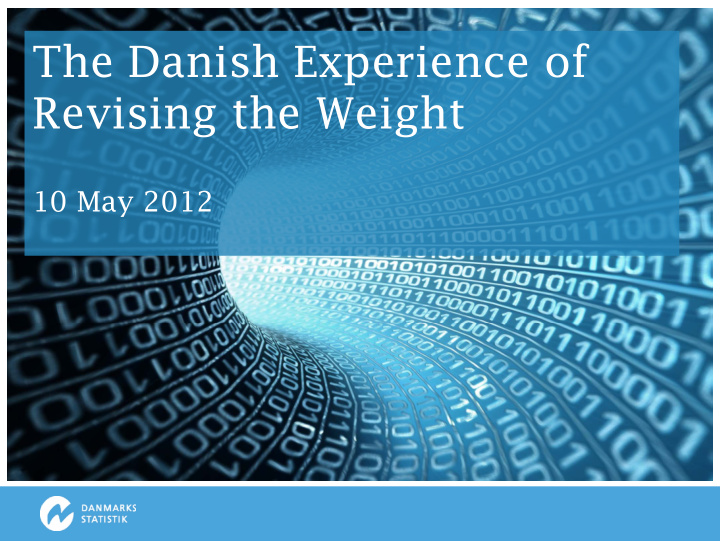



The Danish Experience of > > Revising the Weight 10 May 2012
Contents > > - The revision of the model - Consequences and effects - Lessons learned
Background > > The world is changing – the explanatory power of the background information changes. New possibilities to use the registers A detailed model needs regular review
What do we gain? > > Precision Less risk for errors Documentation -> more transparency - However we risk breaks in time series
Changes to the model > > 2007 model 2011 model Sex*Age*Region Sex*Age*Region Duration of net register Duration of net register unemployment in last quarter unemployment in last quarter Moved or not Moved or not Socioeconomic group (SOCIO) Socioeconomic group (SOCSTIL) Origin (IETYPE) Origin (STATKOD) Gross annual income Gross annual income Educational level Educational level*Age ‐ Number of children in household
Moved or not? > > Main challenge – research protection Solution: Use the date for last removal to correct the effect in the population Great explanatory power currently – maybe not so in the future -> the LFS is now prepared for future updates of the weighting model
Age > > Age is a relative concept = problematic variable Previously no unambiguous definition In the new weighting process defined in two (and just two) ways For extraction and weighting: last day in the quarter before the reference quarter For publication: last day in ref.week -> same as Eurostat’s definition
Main effects – labour market > attachment > Slight fall in labour force overall More or less unchanged employment, though a rise in full time employment Slightly lower unemployment – no special or systematic effects on subgroups Main changes outside the labour force
Number of employed > >
Full-time employed > >
Unemployed > >
Outside the Labour Force > >
Main effects – level of education > > Overall level of education (share of population with tertiary education) a little lower Large drop in educational level for persons aged 30-34 -> much closer to the level in the register
Share with tertiary education 25-64 years > >
Share with tertiary education, > age >
Revisions > > General revision of the LFS stat bank Moving breaks in EU-variables back to 2007 Revising external publications
Breaks in the LFS? > > Main series qualify for analysis over the entire period (1995/6-2012) Relation between unemployment and registered unemployment, employment and NR employment has changed over time -> this is not affected by the new weighting Break in some subgroups, most central among registered unemployed in the LFS General warning: Tread carefully when analysing across 2006/2007.
Lessons learned > > Communication with the users -> little work afterwards Documentation central -> reference documents widely circulated – available on homepage
Thank you for your attention! Questions? > >
Recommend
More recommend